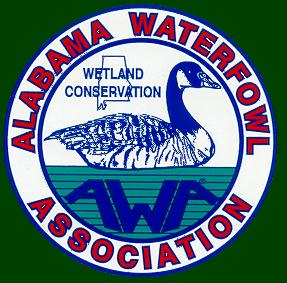

CONSERVATION ALABAMA
"ISOLATED WETLANDS IN ALABAMA HAVE NO REGULATORY AGENCY TO ENFORCE
PROTECTION AND PERMIT IMPACTS">
CONSERVATION ALABAMA

CONSERVATION ALABAMA ALERT
"ISOLATED WETLANDS IN ALABAMA HAVE NO REGULATORY AGENCY TO ENFORCE PROTECTION AND PERMIT IMPACTS, THUS CAUSING ALABAMA TO LOOSE CRITICAL ECOSYSTEMS"
In a landmark ruling earlier this year the U. S. Courts pulled the regulatory teeth of the U. S. Army Corps of Engineers (COE) on isolated wetlands in the U.S. (where no running stream is involved). This left the states to regulate and permit impacts to these isolated wetlands and pothole depressions which make up thousands of acres of very critical ecosystems in Alabama (many bottomland hardwood acres) and in the U.S.
In a July 12th, 2001 meeting with AWA and the Western Regulatory Branch of the Nashville District of the COE, Regulatory Specialist Mr. Forrest McDaniel, stated that, "Alabama is one of the few states that does not have anyone to regulate and permit procedure on impacts to the isolated wetlands and that the state just lost several acres of this nature to a pipeline development with no mitigation to isolated wetlands. The meeting with COE during a final review for permitting AWA's Alabama Wetlands Compensatory Mitigation Site in Jackson County near Scottsboro, Alabama, the Ed Hembree Wildlife Management Area. The 310 acres of restored wetlands will offer economical wetlands compensatory mitigation credits to developments, that impacted wetlands, and have wetlands compensatory mitigation needs.
This ruling on isolated wetlands, take the regulatory component and permitting agency out of the 1992 No Net Loss of Wetlands law, part of the 1976 Clean Water Act and the 1998 Clean Water Initiatives that would require as little as a 1/10 of wetlands acre impact will require wetlands compensatory mitigation. Now we have a federal law that requires mitigation and was regulated by the COE, now a Federal Judge has ruled that the COE has no authority over isolated wetlands. The ruling does not give any funding, or require another agency to regulate and permit projects as part of Section 404 of the Clean Water Act. I think this is criminal to dump this on the state departments with no additional funding for regulatory department. However, this is an emergency and Alabama needs a plan to enforce the loss of Alabama's critical ecosystems, then seek funding for regulating isolated wetlands from appropriate sources.
Alabama does need to protect all the open land we can, according to the American Farmers Trust nine of the Southeast states rank in the top 17 states that have lost the most farms and open space to development in the 1990's. Over 5.5 million acres of land were lost in the Southeast, representing 34 percent of the total 16 million acres of farms and open space lost nationally. From 1992 to 1997 Alabama loss of farms and open spaces totaled 445,300 acres according to the USDA and USA Today.
Even though the Alabama Department of Environmental Management is already under staffed and under funded they need to fill the void until a regulatory solution can be put into place in the state.
AWA is writing to Governor Don Siegelman, Alabama Congressional Delegation, the Alabama Commission of Environmental Initiatives and other conservation groups to make them aware of this critical problem. I encourage all to write and call your state and federal representatives and make them aware of this problem.
For more information on wetlands regulations contact: Mr. Forrest McDaniels at the Western Regulatory Field Office of the Corps of Engineers in Decatur, Alabama phone (256) 350-5620.
Conservation Alabama is an article written by Jerry D. Davis, Chief Executive Officer and one of the principle founders of the Alabama Waterfowl Association. Also, serves as Board of Director on the North American Waterfowl Federation. Serve as publicity director for the Alabama / Tennessee Trail of Tears Corridor Association. AWA are members of the Southeast Outdoor Press Association (SEOPA).